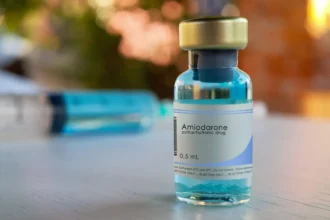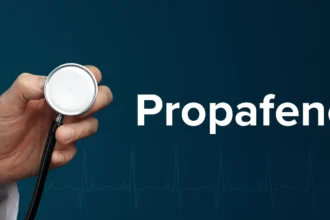Antiarrhythmic drugs: Class III – Amiodarone and others
Class III antiarrhythmics predominantly prolong cardiac repolarization via potassium channel blockade, with amiodarone as…
Antiarrhythmic drugs: Beta-adrenoceptor-blocking drugs (Class 2)
Introduction Among the diverse categories of drugs used to manage cardiac arrhythmias, beta-adrenoceptor-blocking…
Antiarrhythmic drugs: Propafenone (Class 1C)
Propafenone is a Class 1C antiarrhythmic that produces potent, use‑dependent blockade of…
Antiarrhythmic drugs: Flecainide (Class 1C)
Flecainide is a Class 1C antiarrhythmic agent widely used for rhythm control in…
Antiarrhythmic drugs: Mexiletine (Class 1B)
Mexiletine is an oral Class IB antiarrhythmic and sodium channel blocker structurally…
Antiarrhythmic drugs: Lidocaine (Class 1B)
If you trained in a time when every crash cart seemed to…
Antiarrhythmic drugs: Disopyramide (Class 1A)
Introduction Disopyramide is a Class 1a antiarrhythmic agent, primarily used in the…
Antiarrhythmic drugs: Quinidine (Class 1A)
Overview and Learning Objectives By the end of this chapter, you should…
Antiarrhythmic drugs: Procainamide (Class 1A)
Procainamide is a Class IA antiarrhythmic that blocks fast INaINa channels and prolongs repolarization…
Pharmacology of Carbonic Anhydrase Inhibitors
I. Introduction and Class Overview Carbonic anhydrase inhibitors (CAIs) are a class…














